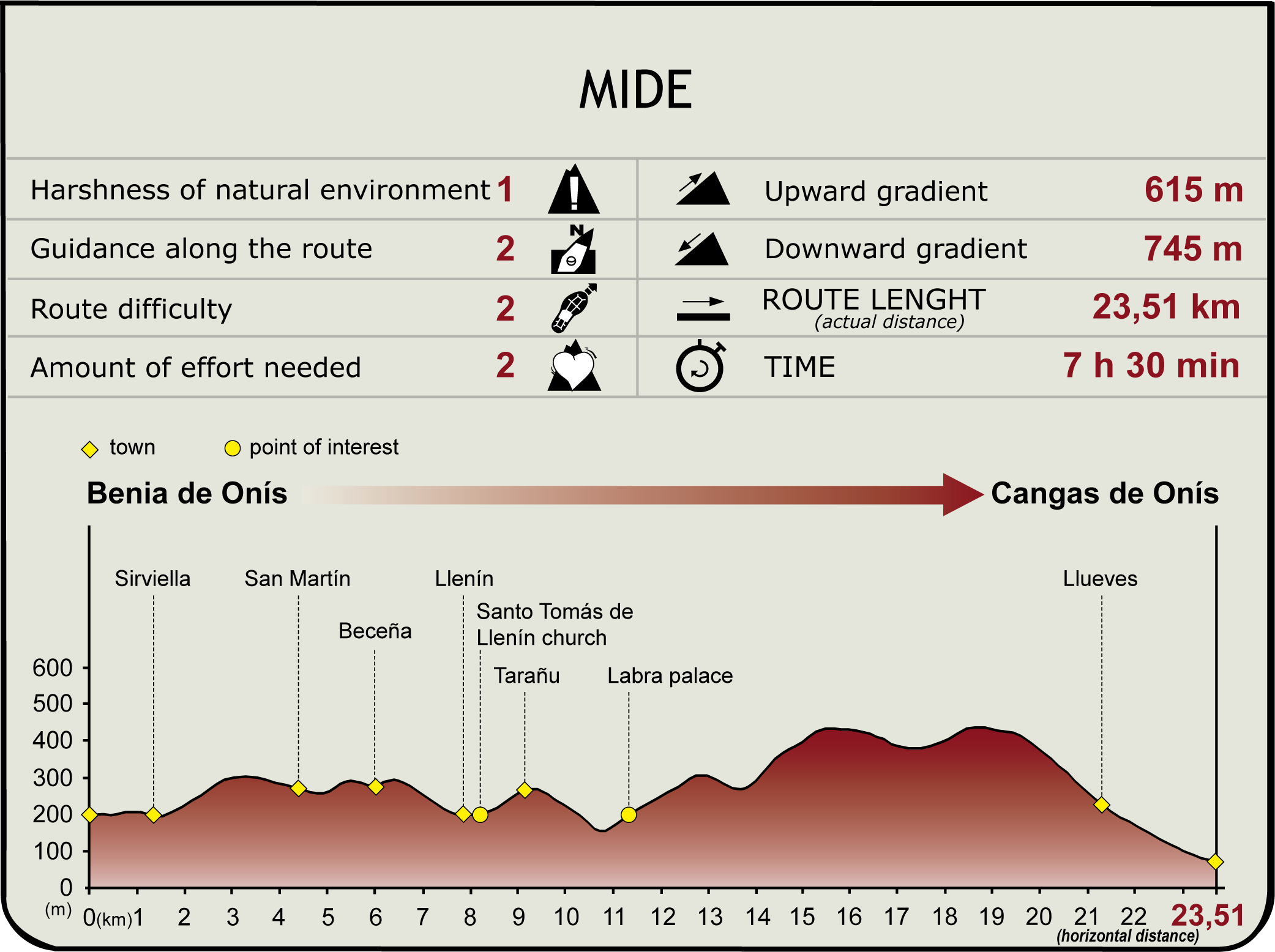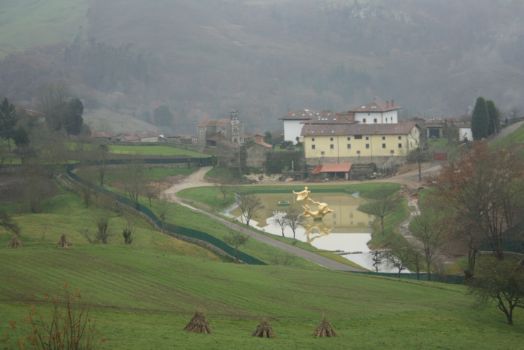Net of Natural
Trails

Stage 4: Benia de Onís - Cangas de Onís
Description
Pastures and traditional architecture
The fourth stage of the Nature Trail runs between the counties of Onís and Cangas de Onís, linking both their capitals. It crosses through various rural towns, where the rich heritage of civil and religious buildings combine in excellent harmony with the beauty of its natural setting.
The Nature Trail starts at Benia de Onís in County Onís, and heads west through small villages. It continues along the road that links various rural villages, ventures into Cangas de Onís County, and continues along a dirt track to the village of Cangas de Onís, its final destination.

Benia de Onís, the capital of the municipality, has several buildings of interest, including the parish church, Casona de los Valles, Casa Abajo, the home of Filomena Pellico or Casa Cebos, which form a well-preserved ensemble in a beautiful setting.
This section starts at AS-114 in Benia de Onís, where the start panel is situated. Immediately after, along the same road towards Cangas de Onís, the route veers onto a narrow road to the right towards Talaveru.
The first part of this section runs along a paved path, at times only covered with gravel, which traverses several villages. The route continues through pastures in a moderate climb, past the villages of Sirviella and, further on, San Martin (Samartín), in Cangas de Onís County. Attention should be paid to the directional signs, as the road will turn onto a track to the left.

Soon after appears the town of Beceña, where the path leaves the chapel of Santo Toribio de Beceña to the right, and descends gently next to the River Prunea, through riparian vegetation, heading to the next town, Llenín.
In Llenín, also at the opposite edge of town, to the right, is the church of Santo Tomás, with a fine example of a yew or texu.
Further on, the road continues to climb gently towards Tárano (Tarañu), a small village with fantastic views of Güeña River Valley. The route descends slightly along a narrow paved road, leaving Tárano behind, then turns onto a track through meadows.

The road continues to descend, then crosses the River Les Vegues over a small bridge. Further on, it passes through the village of Labra, where the Palacio de Labra and the church of San Bartolomé can be seen.
Leaving Labra behind, the road continues in moderate climb along a track through several forests populated with fern (Osmunda cinnamonea) and heath (Erica arborea), and dotted with radiata pine (Pinus radiata) copses, and small Pyrenean oak (Quercus pyrenaica) groves.
The last part of the route descends along the road that passes through the village of Llueves, and heads along the CO-1 towards Cangas de Onís, about two kilometres away. A start-end information panel stands at the edge of the town of Cangas de Onís.
Sites of interest
Puntos de interés
Culture
Geology
Information
Municipality
Profile

Highlights
Further information
Torre de Sirviella
In the centre of the town of Sirviella, located in a meadow, near the intersection of local roads, stands the Tower of Sirviella, a fine example of 16th century folk architecture, and a blend of medieval and Renaissance style.
Sirviella Tower, declared a Monument of Cultural Interest, was restored after being abandoned for a long time after a devastating fire swept through the inside.
The openings in the whitewashed walls of this three-floor, cube-shaped building with hip roof are noteworthy, in particular, the semicircular, voussoir arched entrance and several windows in different styles.
Santo Toribio de Beceña
The chapel of Santo Toribio de Beceña sits on a beautiful meadow located at the top of the village, with magnificent panoramic views. At the foot of the chapel stands a hollow centenary yew (Taxus baccata) with a circumference of nearly 300 centimetres.
The chapel appears to be associated with the transfer of the remains of Santo Toribio to Liébana (Cantabria). Other shrines dedicated to the Saint can also be found along this route, like the one in Llueves.
Favila and the bear
Favila was the second Asturian monarch, successor to his father, King Pelayo. He ruled the Kingdom of Asturias between 737 and 739 and, according to legend, died prematurely in a fight with a bear.
Tradition has it that the death match between King Favila and the bear took place in the village of Llueves. A limestone plaque commemorates this historic event in Llueves, with an Asturian-style stone cross engraved in the centre, and the caption: "a bear killed the king Fa (vila) in the year 739”.
King Favila was buried in the church of Santa Cruz in Cangas de Onís, built by order of the king in 737. His wife, Queen Froiluba, was also buried in this temple, although their remains are no longer found here.



